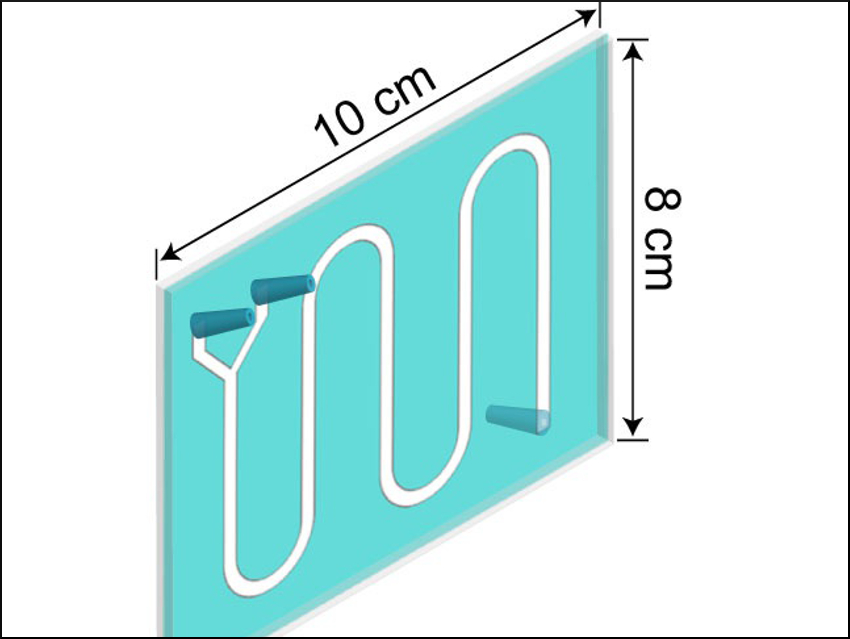Hydrothermal vents might have been the place where life on Earth began. Recreating the involved materials and conditions in the lab is key for testing this hypothesis. However, the number of parameters that need to be tested is large, which demands parallel approaches and the use of microscale volumes. At the vents, mineral precipitates would have formed inorganic membranes at the interface between the hydrothermal fluid and the ocean.
Oliver Steinbock, Florida State University, Tallahassee, USA, and colleagues tackled this challenge by using microfluidic devices (pictured). Within these devices, the team created mineral membranes from iron, calcium, manganese, cobalt, copper, zinc, or nickel compounds and tested them for prebiotic reactivity. Their focus was the formation of pyrophosphate from phosphate and acetyl phosphate, which might have been early life’s energy carrier.
The yields of pyrophosphate were determined by aqueous 31P NMR spectroscopy. The team found that pyrophosphate forms in the porous mineral membranes. Iron(II) and calcium phosphate are the best catalysts for pyrophosphate synthesis, but iron(III) and green rust also promote the reaction. These findings demonstrate the usefulness of the microfluidic approach for the rapid screening of prebiotic conditions.
- Microfluidic Production of Pyrophosphate Catalyzed by Mineral Membranes with Steep pH Gradients,
Qingpu Wang, Laura M. Barge, Oliver Steinbock,
Chem. Eur. J. 2019.
https://doi.org/10.1002/chem.201805950




